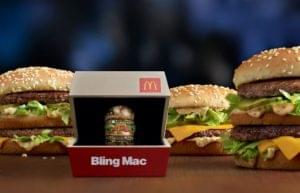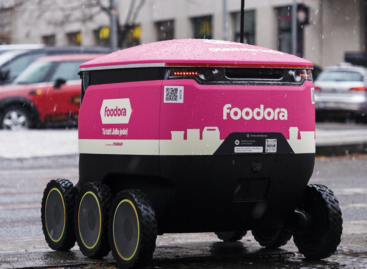McDonald’s fights back: price cuts in the US to restore ‘affordable’ image
In some locations across the United States, the price of a Big Mac meal climbed as high as $18 (≈HUF 6,400), prompting McDonald’s to launch a nationwide round of price cuts. The aim is to restore the brand’s “affordable” image and win back customers with cheaper, more transparent offers after many turned away from fast food due to inflation.
What does this mean in practice?
 After lengthy talks, the company and franchise operators agreed on a joint price-cut package. As part of this, the prices of eight popular meals will be at least 15% lower than buying the items separately. Several Extra Value Meal promotions will roll out through the end of the year:
After lengthy talks, the company and franchise operators agreed on a joint price-cut package. As part of this, the prices of eight popular meals will be at least 15% lower than buying the items separately. Several Extra Value Meal promotions will roll out through the end of the year:
-
$5 (≈HUF 1,700) breakfasts,
-
$8 (≈HUF 2,700) Big Mac or McNuggets meals.
The company is treating the program as a top priority and has even offered financial support to franchise partners if they implement the price reductions.
Why is McDonald’s acting now?
Americans’ purchasing power has weakened, and traffic has fallen at many chains: so far this year, restaurant visits are down 1.7%, and fast-food visits are down 2.7%. Although McDonald’s revenue grew in the latest quarter, footfall lagged expectations. Joe Erlinger, head of the company’s U.S. business, emphasized in an internal message that “customers are looking for affordable, everyday offers.”
According to CEO Chris Kempczinski, the factor that most shapes how consumers judge the brand is menu pricing. A large Big Mac meal currently averages $10.53 (≈HUF 3,600) in the U.S., but studies show a range of $5.69–$18.99 (≈HUF 1,900–6,400) — cheaper in smaller and mid-sized cities, pricier in major metros. Between 2019 and 2024, the average price of Big Mac meals rose 27%, driven mainly by rising costs at franchise operators.
Tension in the franchise system — and a compromise
The corporate center and operators didn’t always want to cut prices in the same places: while McDonald’s would have preferred reductions in less high-profile items, many franchisees pushed to phase out promotions such as $1 drinks. The new agreement restores the power of bundled offers and creates a more consistent sense of value for guests.
What can customers expect?
In the short term: cheaper, fixed-price meals, simpler choices, and more predictable bills. The company says lower-income consumers are increasingly eating breakfast at home; the new $5 breakfast deals target this segment. Meanwhile, middle- and higher-income guests continue to visit more often — for them, the “good value for money” message is decisive.
Outlook: rapid response in the price war
The world’s largest fast-food chain has once again shown it can react quickly and in a coordinated way to shifting market conditions. If Extra Value Meals stay in the $8–$10 band, McDonald’s is likely to strengthen perceptions of affordability, while promotions and franchise support help keep guest-count declines in check. The ultimate test, however, will be whether the price cuts not only drive traffic but remain profitable across the network.
Related news
K&H: significant price drop in the pork market
🎧 Hallgasd a cikket: Lejátszás Szünet Folytatás Leállítás Nyelv: Auto…
Read more >McDonald’s Christmas commercial sparks controversy
🎧 Hallgasd a cikket: Lejátszás Szünet Folytatás Leállítás Nyelv: Auto…
Read more >Already a reality in Prague, Budapest next? – foodora tested robot delivery
🎧 Hallgasd a cikket: Lejátszás Szünet Folytatás Leállítás Nyelv: Auto…
Read more >Related news
How do young adults celebrate?
🎧 Hallgasd a cikket: Lejátszás Szünet Folytatás Leállítás Nyelv: Auto…
Read more >Vajda-Papír celebrates Ooops!’s 15th anniversary with a hybrid AI campaign
🎧 Hallgasd a cikket: Lejátszás Szünet Folytatás Leállítás Nyelv: Auto…
Read more >Pre-holiday shopping at up to half price
🎧 Hallgasd a cikket: Lejátszás Szünet Folytatás Leállítás Nyelv: Auto…
Read more >






